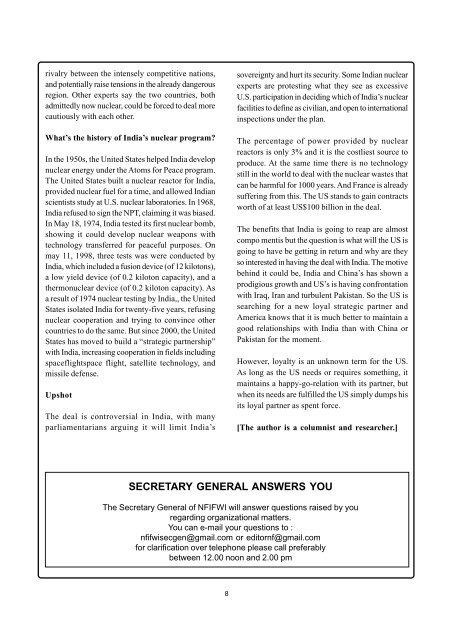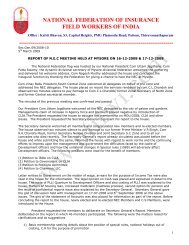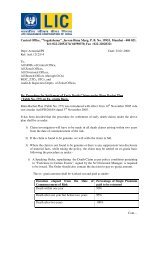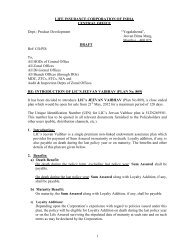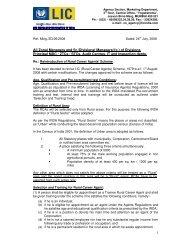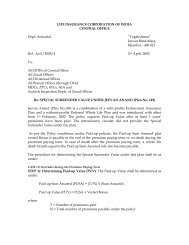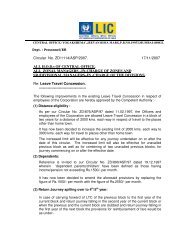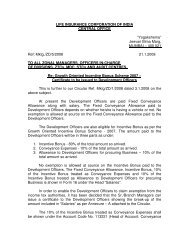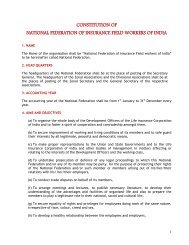ivalry between the intensely competitive nations,and potentially raise tensions in the already dangerousregion. Other experts say the two countries, bothadmittedly now nuclear, could be forced to deal morecautiously with each other.What’s the history of India’s nuclear program?In the 1950s, the United States helped India developnuclear energy under the Atoms for Peace program.The United States built a nuclear reactor for India,provided nuclear fuel for a time, and allowed Indianscientists study at U.S. nuclear laboratories. In 1968,India refused to sign the NPT, claiming it was biased.In May 18, 1974, India tested its first nuclear bomb,showing it could develop nuclear weapons withtechnology transferred for peaceful purposes. Onmay 11, 1998, three tests was were conducted byIndia, which included a fusion device (of 12 kilotons),a low yield device (of 0.2 kiloton capacity), and athermonuclear device (of 0.2 kiloton capacity). Asa result of 1974 nuclear testing by India,, the UnitedStates isolated India for twenty-five years, refusingnuclear cooperation and trying to convince othercountries to do the same. But since 2000, the UnitedStates has moved to build a “strategic partnership”with India, increasing cooperation in fields includingspaceflightspace flight, satellite technology, andmissile defense.UpshotThe deal is controversial in India, with manyparliamentarians arguing it will limit India’ssovereignty and hurt its security. Some Indian nuclearexperts are protesting what they see as excessiveU.S. participation in deciding which of India’s nuclearfacilities to define as civilian, and open to internationalinspections under the plan.The percentage of power provided by nuclearreactors is only 3% and it is the costliest source toproduce. At the same time there is no technologystill in the world to deal with the nuclear wastes thatcan be harmful for 1000 years. And France is alreadysuffering from this. The US stands to gain contractsworth of at least US$100 billion in the deal.The benefits that India is going to reap are almostcompo mentis but the question is what will the US isgoing to have be getting in return and why are theyso interested in having the deal with India. The motivebehind it could be, India and China’s has shown aprodigious growth and US’s is having confrontationwith Iraq, Iran and turbulent Pakistan. So the US issearching for a new loyal strategic partner andAmerica knows that it is much better to maintain agood relationships with India than with China orPakistan for the moment.However, loyalty is an unknown term for the US.As long as the US needs or requires something, itmaintains a happy-go-relation with its partner, butwhen its needs are fulfilled the US simply dumps hisits loyal partner as spent force.[The author is a columnist and researcher.]SECRETARY GENERAL ANSWERS YOUThe Secretary General of <strong>NFIFWI</strong> will answer questions raised by youregarding organizational matters.You can e-mail your questions to :nfifwisecgen@gmail.com or editornf@gmail.comfor clarification over telephone please call preferablybetween 12.00 noon and 2.00 pm8
Nuclear scientist’s appeal to India’s parliamentariansEminent nuclear scientists have issued an appealto India’s parliamentarians, asking them to insist onthe ground rules for the Indo-US nuclear deal atthis stage itself, since they believe the deal, in theform approved by the US House of Representatives,infringes on India’s independence for carrying outresearch and development in nuclear science andtechnology.The nuclear scientists :Dr H N Sethna, former chairman, Atomic EnergyCommission;Dr M R Srinivasan, former chairman, AtomicEnergy Commission;Dr P K Iyengar, former chairman, Atomic EnergyCommission;Dr A Gopalakrishnan, former chairman, AtomicEnergy Regulatory Board;Dr S L Kati, former managing director, NuclearPower Corporation;Dr A N Prasad, former director, Bhabha AtomicResearch Centre;Mr Placid Rodriguez, former director of the IndiraGandhi Centre for Atomic Research andDr Y S R Prasad, former chairman & managingdirector, Nuclear Power Corporation;-said in their appeal that the representatives inParliament need to ensure that decisions taken todaydo not inhibit our future ability to develop and pursuenuclear technologies for the benefit of the nation.This is the text of their appeal:While the nation and Parliament discuss the Indo-US nuclear deal from various angles, we feel it isour responsibility to place before the nation our wellconsideredviews on the impact of this deal on thefuture of Indian nuclear science and technology, andits effects on the energy security of the nation. Wehave all worked in the field of atomic energy fromthe very early years after India’s independence.From very small beginnings, we have now reacheda stage where we are in possession of all thetechnologies needed for the production of electricityfrom indigenous nuclear minerals, and havesuccessfully applied these technologies in diversesectors from health, agriculture and industry tonational and energy security. All this has been possiblewith the support of the people represented in thegovernment through Parliament, and the outstandingstatesmen who have guided and supported our plans.We therefore feel it is our obligation to make publicour perceptions for the effective and continuednurturing and utilisation of this technology in thecountry. Science is universal. Knowledge can becreated in any part of the world, and technologycomes with experimentation and the willingness totake risks. We have followed all these paths to reachthe present stage of development. We are amongstthe most advanced countries in the technology offast-breeder reactors, which is crucial to the futureof our energy security. Along the way we havederived benefits from international collaboration. Atthe same time, we have also shared some of ourabilities in this field with the world. Indian scientistshave been ambassadors, with knowledge andcreativity as their tools. It is of prime importance touphold these cherished traditions.It is significant that the most advanced country innuclear science and technology has come forwardto accept us into the international nuclear community,by the historic document signed by our PrimeMinister with President Bush on July 18, 2005. Thebasic principles for cooperation were well laid out inthis bilateral understanding and the prime ministerhas appraised our Parliament of this. No doubt itneeds the concurrence of the other nationscomprising the Nuclear Suppliers Group, and of theInternational Atomic Energy Agency.Based on this agreement, the US lawmakers andthe administration are in the process of re-framingtheir laws, which could change the nature of relationsbetween the two countries. This is a most welcomeinitiative of the United Progressive Alliancegovernment, and is a continuation of the processessentially begun during the previous NationalDemocratic Alliance government. Thus, there is noquestion of any political partisanship on this matter.9


